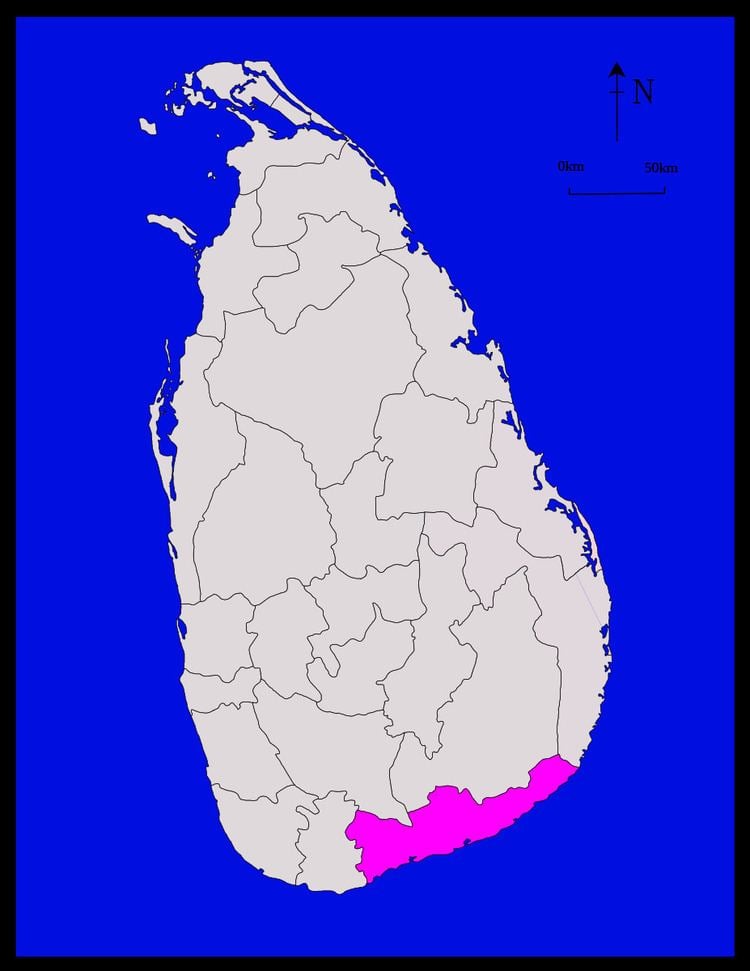Time zone Sri Lanka (UTC+05:30) | Population 596,617 (2011) ISO 3166 code Sri Lanka | |
 | ||
Divisions ListDivisional Secretariats: 12Grama Niladhari: 576 Website hambantota.dist.gov.lk/ Area 2,609 km² (2,496 km² Land / 113 km² Water) Points of interest Yala National Park, Bundala National Park, Mulkirigala Raja Maha Vihara, Ridiyagama Safari Park, Yatala Vehera Destinations Yala National Park, Hambantota, Bundala National Park, Tissamaharama, Lunugamvehera National Park | ||
Hambantota District (Sinhalese: හම්බන්තොට දිස්ත්රික්කය hambantoṭa distrikkaya; Tamil: அம்பாந்தோட்டை மாவட்டம் Ampāntōṭṭai māvaṭṭam) is a district in Southern Province, Sri Lanka. It is one of 25 districts of Sri Lanka, the second level administrative division of the country. The district is administered by a District Secretariat headed by a District Secretary (previously known as a Government Agent) appointed by the central government of Sri Lanka.
Contents
Map of Hambantota, Sri Lanka
Hambantota District is located on the southeastern coast of Sri Lanka. It has an area of 2,593 km² and a very dry climate. The district capital is Hambantota town; the administrative headquarters are there as well as the center of salt production. Other prominent towns include Tangalle, Ambalantota, Tissamaharama, and Beliatta.
Before modern development took place after the country gained independence in 1948, the agriculture in the district was characterised by swidden cultivation (chena or slash-and-burn) and, to some extent, paddy cultivation on non-irrigated land. In the highlands, kurakkan — a grain used to make an eatable paste — was cultivated with other grains such as corn. Leonard Woolf's Village in the Jungle provides a highly interesting and insightful account of the people, the land and issues of concern during the British Colonial period as he worked as an assistant government agent for Hambantota.
Demographics
Hambantota District has a population of 596,617 (2011) of whom 96% are considered rural residents. Some 13.4% of the labor force of 244,847 is unemployed — in comparison to the national average of 8.3%. Of those employed, 42.2% are in the agricultural sector, 23.3% in industry with the remaining 34.5% working in the services sector.
